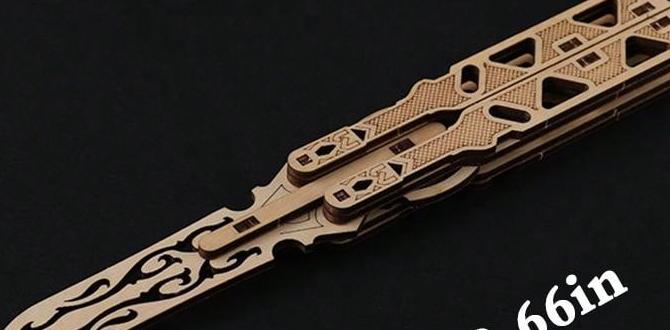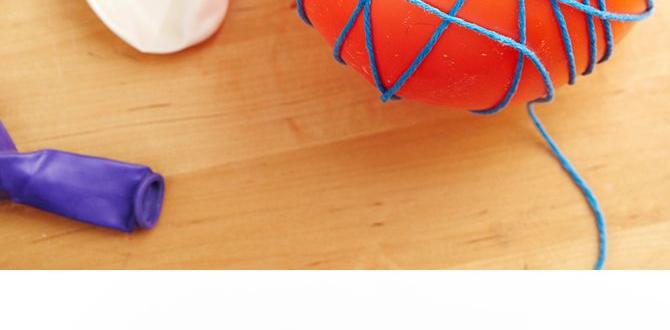Quick Summary: For reclaimed wood projects, a brad nailer or a finish nailer is your best bet. Look for adjustable depth settings and a magazine that can handle both brads and slim finishing nails to tackle the unique challenges of old wood.
Working with reclaimed wood is incredibly rewarding. It brings character, history, and a unique beauty to any project. But let’s be honest, it can also be a bit tricky! Old wood often has knots, variation in density, and sometimes remnants of old nails or screws. This is where choosing the right nailer becomes super important. You don’t want to split your beautiful old boards or drive nails at a weird angle. Don’t worry, though! By picking the right tool, you can make working with reclaimed wood a joy, not a frustration. We’re going to break down exactly what you need to know to find your perfect nailer for all your rustic creations.
Table of Contents
Why Reclaimed Wood Needs a Special Touch (and a Special Nailer!)
Reclaimed wood is fantastic for giving your projects that rustic, vintage charm. Think barn doors, farmhouse tables, accent walls, or even unique shelving. Each piece of reclaimed wood tells a story, and that’s what makes it so special. However, this history also means it can be less predictable than new lumber.
- Varied Density: Old wood might have denser knots or softer, weathered sections.
- Hidden Obstacles: Sometimes, old nails, screws, or metal fragments can be hiding just below the surface. A powerful nailer might struggle or even be damaged by these.
- Splitting Risk: Dry, aged wood can be more prone to splitting, especially near the edges. You need a nailer that can drive fasteners cleanly without causing damage.
- Aesthetic Considerations: You want nails that are discreet and blend in, rather than causing noticeable splits or surface damage.
Because of these characteristics, a standard framing nailer, which shoots large, powerful nails, is usually overkill and can lead to damage. You need something more precise and less aggressive. That’s where the humble brad nailer and finish nailer come in, offering the control and finesse needed for these unique materials.
Understanding Your Nailer Options: Brad vs. Finish Nailer
When it comes to working with reclaimed wood for furniture, trim, or decorative pieces, two types of nailers stand out: the brad nailer and the finish nailer. They look similar and function in a very similar way, but there are key differences that make one better suited for certain tasks.
The Mighty Brad Nailer
A brad nailer drives very thin, short nails called brads. These nails are usually made of 18-gauge wire. Because they are so slender, they leave a very small hole that’s easy to conceal. This makes them ideal for delicate work where you want the fasteners to be almost invisible.
- Nail Size: Typically 18-gauge.
- Best For: Attaching small trim pieces, decorative molding, attaching thin sheet goods, and projects where minimal nail marks are desired.
- Pros: Leaves tiny holes, very little risk of splitting wood, lightweight, and easy to maneuver.
- Cons: Not strong enough for structural joints; the holding power is minimal.
The Versatile Finish Nailer
A finish nailer drives slightly thicker and longer nails than a brad nailer. These nails are typically 16-gauge. They have a bit more holding power than brads but still leave a relatively small and manageable hole. Finish nailers are a workhorse for many woodworking tasks.
- Nail Size: Typically 16-gauge.
- Best For: Attaching baseboards, crown molding, window and door casings, and the main structural elements of smaller furniture pieces.
- Pros: Offers more holding power than a brad nailer, still leaves a reasonably small hole, versatile for many trim and light construction tasks.
- Cons: Slightly larger nail hole than a brad nailer, can still split very brittle or thin wood if not used carefully.
For reclaimed wood, a 16-gauge finish nailer is often the go-to choice because it offers a good balance of holding power and minimal surface damage. If your project is very delicate or you’re working with extremely thin reclaimed pieces, an 18-gauge brad nailer might be a better fit.
Key Features to Look for in a Nailer for Reclaimed Wood
When you’re shopping for the best nailer for reclaimed wood projects, keep an eye out for these crucial features. They’ll make your life much easier and help you achieve professional-looking results on those character-filled boards.
1. Adjustable Depth of Drive
This is perhaps the most important feature. Reclaimed wood can vary in softness and hardness. An adjustable depth setting allows you to control how deep the nail penetrates the wood. On softer reclaimed wood, you’ll want to set it shallower to avoid driving the nail completely through or causing blowout on the backside. On denser pieces, you can drive it a bit deeper for better holding power. Most modern electric and pneumatic nailers have this feature, often controlled by a dial or trigger adjustment. Look for clear markings so you can easily fine-tune the depth.
2. No-Mar or Protective Tip
A soft rubber tip on the nose of the nailer, often called a no-mar or non-marring tip, is a lifesaver. Reclaimed wood can have beautiful, but sometimes delicate, finishes. This protective tip prevents accidental dents or scratches on the wood surface as you’re firing nails. It’s especially useful when working with thin or soft reclaimed materials where marring is a significant concern.
3. Sequential vs. Contact Trip Trigger
Nailer triggers come in two main modes:
- Sequential (or Single) Fire: You must pull the trigger for each nail. This offers the most control and accuracy, making it excellent for precise placement and avoiding accidental nail fires. This is generally recommended for working with reclaimed wood where every shot counts.
- Contact (or Bump) Fire: You hold the trigger down and can fire nails by simply bumping the nose of the nailer against the wood. This is fast but offers less control. While great for framing, it’s not usually the best choice for detailed work with reclaimed materials unless you’re very experienced.
Many nailers allow you to switch between these modes. For reclaimed wood, prioritize a nailer that has a reliable sequential fire mode.
4. Tool-Free Jam Release
Even with the best nailers, jams can happen, especially when dealing with varied materials like reclaimed wood. A tool-free jam release means you can quickly and easily clear any jammed nails without needing to find and fumble with small tools. This saves valuable time and keeps your project moving forward.
5. Power Source: Corded Electric, Battery, or Pneumatic?
This decision depends on your workspace, budget, and how often you’ll use the nailer.
- Pneumatic (Air-Powered): These are the traditional workhorses. They require an air compressor and air hose, which adds bulk and reduces portability. However, they are often the most powerful, fastest, and most reliable. For heavy reclaimed wood projects, they are a strong contender if you have the setup. A good air compressor is crucial for consistent power delivery.
- Corded Electric: These plug into a standard wall outlet. They offer consistent power without the need for a compressor but tether you to a power source. Good for workshops or projects close to an outlet.
- Battery-Powered (Cordless): These are the most convenient for portability. They use rechargeable batteries, meaning no hoses or cords. Modern battery-powered nailers are powerful enough for most finish and brad nailing tasks. They are often the most beginner-friendly due to ease of use. Brands like DeWalt, Ryobi, and Milwaukee offer excellent cordless options.
For reclaimed wood, especially if you’re moving around a lot or working on-site, a high-quality cordless battery-powered finish nailer is often the best combination of power, convenience, and precision.
Top Nailer Recommendations for Reclaimed Wood Projects
Based on the features we’ve discussed, here are a few types of nailers that excel with reclaimed wood. Remember, the “best” nailer often depends on your specific project needs and budget.
1. 16-Gauge Cordless Finish Nailer
This is your all-around champion for reclaimed wood. It provides enough power to secure pieces firmly but is gentle enough not to split delicate aged wood. The cordless convenience is a huge plus for navigating around projects.
Example Features: Adjustable depth, no-mar tip, dual-mode trigger (sequential and bump), tool-free jam release, battery-powered.
2. 18-Gauge Cordless Brad Nailer
If your reclaimed wood pieces are thinner, more delicate, or you need to attach very small trim, an 18-gauge brad nailer is the way to go. It leaves the smallest nail holes and has the lowest risk of splitting wood.
Example Features: Slim profile, adjustable depth, no-mar tip, sequential fire mode, battery-powered.
3. Pneumatic 16-Gauge Finish Nailer
If you already have an air compressor and prefer the raw power and speed of pneumatic tools, a 16-gauge pneumatic finish nailer is an excellent option. They are often more affordable upfront than cordless models and can be very reliable.
Example Features: Lightweight (compared to the compressor setup), often very fast firing rate, requires air hose and compressor, adjustable depth is standard.
It’s worth noting that some manufacturers make “combo kits” that allow you to switch heads to use either brad nails or finish nails, and some even have interchangeable fuel cells or battery systems. These can be a great value if you work with a variety of projects.
Comparing Nailer Types for Reclaimed Wood
Here’s a quick comparison to help you decide:
| Feature | 18-Gauge Brad Nailer | 16-Gauge Finish Nailer | Pneumatic Nailer (General) |
|---|---|---|---|
| Nail Size | Very thin (18-ga) | Slightly thicker (16-ga) | Varies (usually 16-ga or 18-ga for trim) |
| Holding Power | Low | Medium | Can be High (depending on gauge) |
| Hole Size/Visibility | Smallest | Small | Varies by gauge |
| Risk of Splitting | Lowest | Low | Low to Medium (depending on gauge/power) |
| Best Use Case for Reclaimed Wood | Delicate trim, thin panels, decorative elements | General trim, baseboards, casings, light furniture | Workshop use, high volume, consistent power need |
| Portability | High (Cordless) | High (Cordless) | Low (Requires compressor/hose) |
| Power Source | Battery, Pneumatic, Electric | Battery, Pneumatic, Electric | Air Compressor (Pneumatic) |
Essential Accessories and Safety Gear
Beyond the nailer itself, a few other things will make your reclaimed wood projects smoother and safer.
Nails
This might seem obvious, but using the correct size and type of nails is critical. For your 16-gauge finish nailer, you’ll need 16-gauge nails. For an 18-gauge brad nailer, you’ll need 18-gauge brads. Pay attention to the length needed for your project. Shorter nails for thinner wood, longer for thicker pieces. Always use nails recommended by the nailer manufacturer.
Air Compressor (if using pneumatic)
If you go the pneumatic route, you’ll need a good air compressor. Look for one with a decent tank size (5 gallons or more is usually good for DIY tasks) and an output of around 90 PSI. A regulator is essential to control the air pressure to the nailer, which helps with depth control and tool longevity.
Batteries and Charger (if using cordless)
If you opt for a battery-powered nailer, invest in at least one extra battery. There’s nothing worse than running out of juice halfway through a project. Make sure you have a reliable charger.
Safety Glasses
This is non-negotiable. Always wear safety glasses that meet the ANSI Z87.1 standard. Flying debris, runaway nails, or bits of wood can cause serious eye injury. Make sure your safety glasses fit well and create a good seal around your eyes.
Hearing Protection
Nailers, especially pneumatic ones, can be loud. Earplugs or earmuffs will protect your hearing over the long term. Integrated hearing protection in some safety glasses is also an option.
Gloves
Work gloves protect your hands from splinters, rough wood surfaces, and minor abrasions. They also provide a better grip.
Step-by-Step: Using Your Nailer with Reclaimed Wood
Let’s walk through how to use your new nailer with reclaimed wood effectively and safely.
Step 1: Inspect Your Reclaimed Wood
Before you even pick up your nailer, examine the pieces of reclaimed wood you’ll be working with. Look for any old nails, staples, or screws sticking out or just beneath the surface. You’ll want to remove these with a nail puller or pry bar. Also, feel for any unusually hard spots or knots.
Step 2: Set Up Your Nailer
- Pneumatic: Connect the air hose to your compressor and the nailer. Set your compressor’s regulator to the pressure recommended by the nailer manufacturer (usually around 70-90 PSI).
- Cordless Electric: Ensure your battery is fully charged and inserted correctly.
- Corded Electric: Plug it into a suitable power outlet.
Step 3: Load the Nails
Open the nail magazine according to the manufacturer’s instructions and insert the correct type and length of nails. Close the magazine securely.
Step 4: Adjust Depth of Drive
This is crucial! Start with a scrap piece of the same reclaimed wood if possible. Set your nailer’s depth adjustment to a medium setting.
- Fire a test nail.
- If the nail head is sticking out too much, increase the depth (drive it deeper).
- If the nail head is sunk too far in or has caused the wood to split, decrease the depth (drive it shallower).
- Achieve a nail head that is just slightly below or flush with the wood surface.
You may need to adjust this for different hardnesses within your reclaimed wood supply.
General Safety Tip: Always point the nailer away from yourself and others when you’re not actively firing a nail. If your nailer has a safety lockout, engage it when not in use.
Step 5: Position and Fire
Place the nose of the nailer firmly against the wood where you want to drive a nail. Ensure the safety contact tip is also on the wood surface. If using sequential fire mode, pull the trigger. If using bump fire, depress the trigger and then bump the nose of the nailer against the wood. For reclaimed wood, sequential fire is generally preferred for precision.
Step 6: Inspect the Nail Shot
Check that the nail has driven correctly and that the wood hasn’t split. If it has split, you might need to adjust the depth further, use a shorter nail, or try a slightly different location.
Step 7: Continue with Your Project
Work your way through your project, firing nails as needed. Remember to maintain proper technique: firm pressure, consistent trigger control, and always wearing your safety gear. It’s also a good idea to do a quick check for jams periodically.
Common Reclaimed Wood Nailer Challenges and Solutions
Working with reclaimed wood can present unique issues. Here’s how to tackle them:
- Problem: Wood Splitting
Solution: Reduce the depth of drive. Use shorter nails. Try a brad nailer instead of a finish nailer. Pre-drilling pilot holes in very brittle areas (though this defeats the purpose of a nailer, it can save a critical piece). Ensure the nailer is set to a lower PSI if pneumatic. - Problem: Nail Jamming
Solution: Use the tool-free jam release to clear the obstruction. Make sure you are using the correct size and type of nails specified



